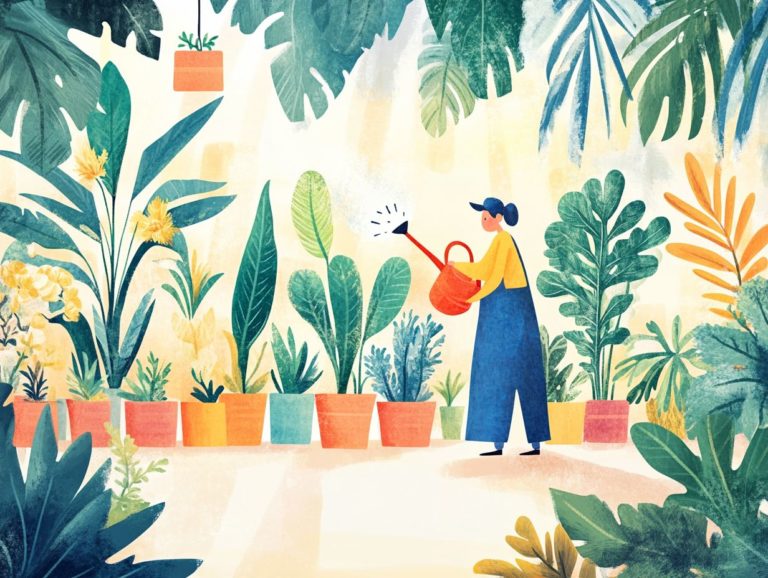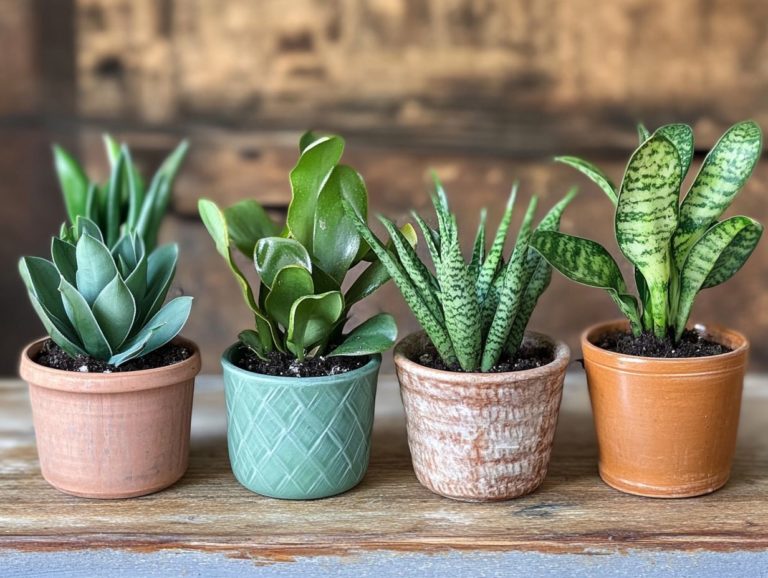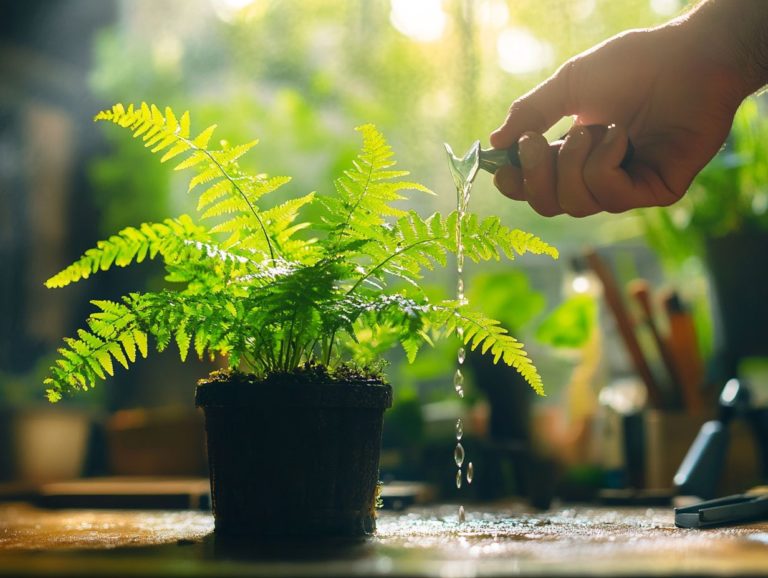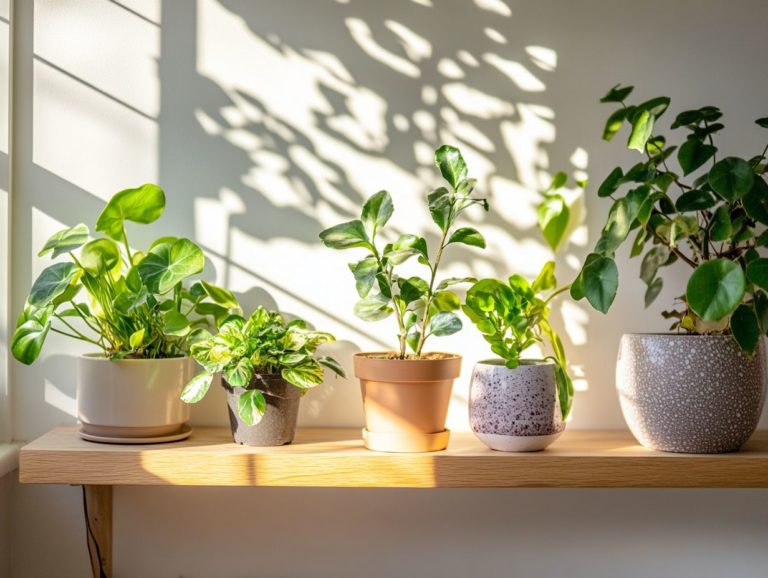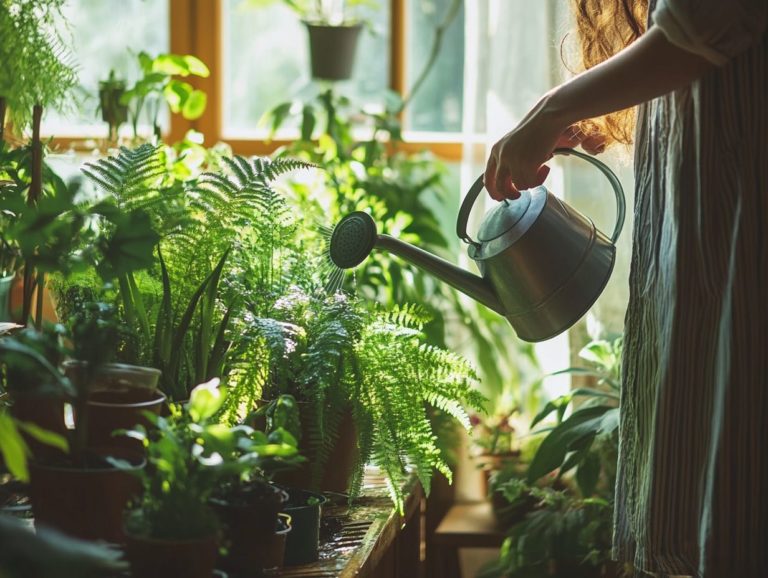How to Use a Watering Can Effectively
Watering cans are indispensable tools for any gardener. Mastering their use can truly elevate your gardening experience.
Explore the array of watering can options available. Select the size and material that best suit your needs. Learn how to prepare and maintain your watering can. Discover effective watering techniques tailored specifically for different plants.
We’ll tackle common challenges you may encounter. We ll share expert tips on maximizing water efficiency in your garden.
Dive in and transform yourself into a watering can connoisseur!
Contents
- Key Takeaways:
- Getting to Know Your Watering Can
- Preparing Your Watering Can
- Techniques for Effective Watering
- Troubleshooting Common Watering Issues
- Tips for Maximizing Water Efficiency
- Frequently Asked Questions
- 1) How do I choose the right watering can for my plants, including options like Haws watering can and Fiskars gardening tools?
- 2) How much water should I pour with each use of the watering can?
- 3) What is the best way to hold a watering can?
- 4) How often should I water my plants with a watering can?
- 5) Can I use a watering can for all types of plants?
- 6) How do I clean and maintain my watering can for effective use?
Key Takeaways:
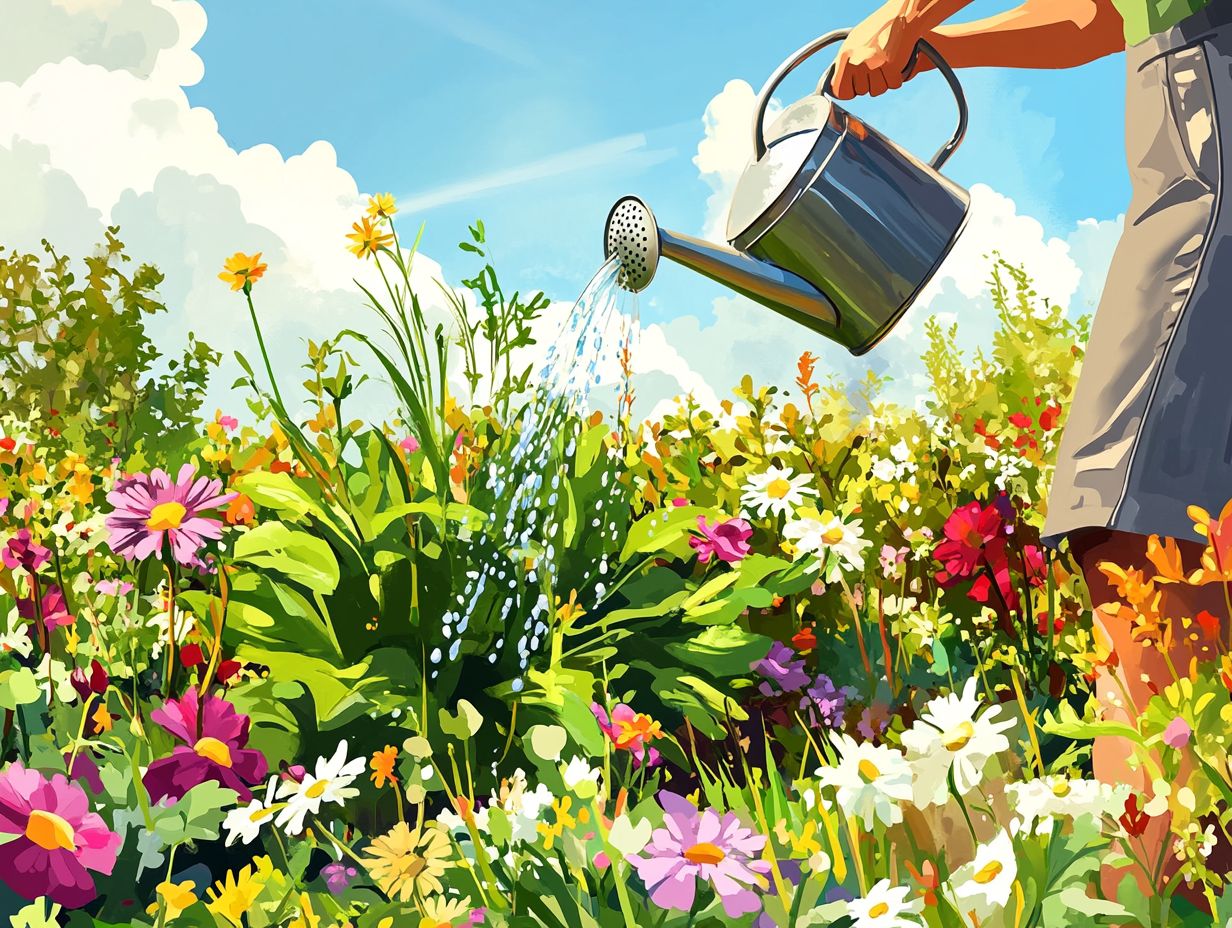
- Choose the right watering can size and material for your specific plants to ensure proper watering.
- Maintain your watering can by regularly cleaning it to avoid clogs and ensure efficient watering.
- Learn proper techniques for watering different plants, including timing and frequency, to avoid common watering issues and conserve water in your garden.
Getting to Know Your Watering Can
Understanding your watering can is crucial for mastering the art of gardening. Whether you re nurturing a vibrant indoor oasis or cultivating an outdoor paradise, selecting the right watering can elevates your plant care.
You ll discover many designs available in the market, each tailored for different gardening jobs. This makes your watering experience effortless.
From shapes that fit comfortably in your hand to the ideal flow type, every detail plays a significant role in refining your watering routine. These choices enhance both the health and beauty of your garden.
Types of Watering Cans
You ll find various watering cans tailored to meet your specific gardening needs and preferences. Brands like Haws, Gardman, OXO, and Bloem provide a range of designs, ensuring functionality and visual appeal.
Take Haws, for example. Their high-quality metal designs not only exude elegance but also offer durability and a comfortable grip. This makes them an excellent choice for larger gardens.
If you prefer something lightweight, Gardman s plastic options are perfect for easy handling, especially when watering hanging plants or containers.
Meanwhile, OXO stands out with its innovative ergonomic designs that prioritize your comfort. Don t overlook Bloem, whose eco-friendly cans cater to environmentally conscious gardeners. Each brand offers unique features, helping you find the perfect tool to nurture your plants effectively.
Choosing the Right Size and Material
Selecting the perfect size and material for your watering can is essential for enhancing your overall gardening experience.
Consider the size of your watering can in relation to your garden s scale. For a cozy balcony garden, a compact model will suffice. Larger plots will benefit from a more spacious design, minimizing those extra trips back to the water source.
Material choice is equally important, influencing both performance and usability. Metal watering cans are known for their durability and longevity, often featuring attractive designs that enhance your garden’s aesthetics.
Plastic options are also budget-friendly and lightweight, making them easier to maneuver for various watering tasks.
Don’t overlook details like spout length and handle comfort. These factors can dramatically impact your effectiveness and satisfaction as you nurture your plants.
Preparing Your Watering Can
Prepare your watering can by cleaning it thoroughly and maintaining it regularly. This ensures effective watering and helps your plants thrive.
A meticulously maintained watering can not only extends its longevity but also elevates your watering experience, enabling you to meet the needs of your delicate plants with precision and ease. Additionally, exploring using a spray bottle for watering can also be effective in providing targeted moisture.
Cleaning and Maintaining Your Watering Can
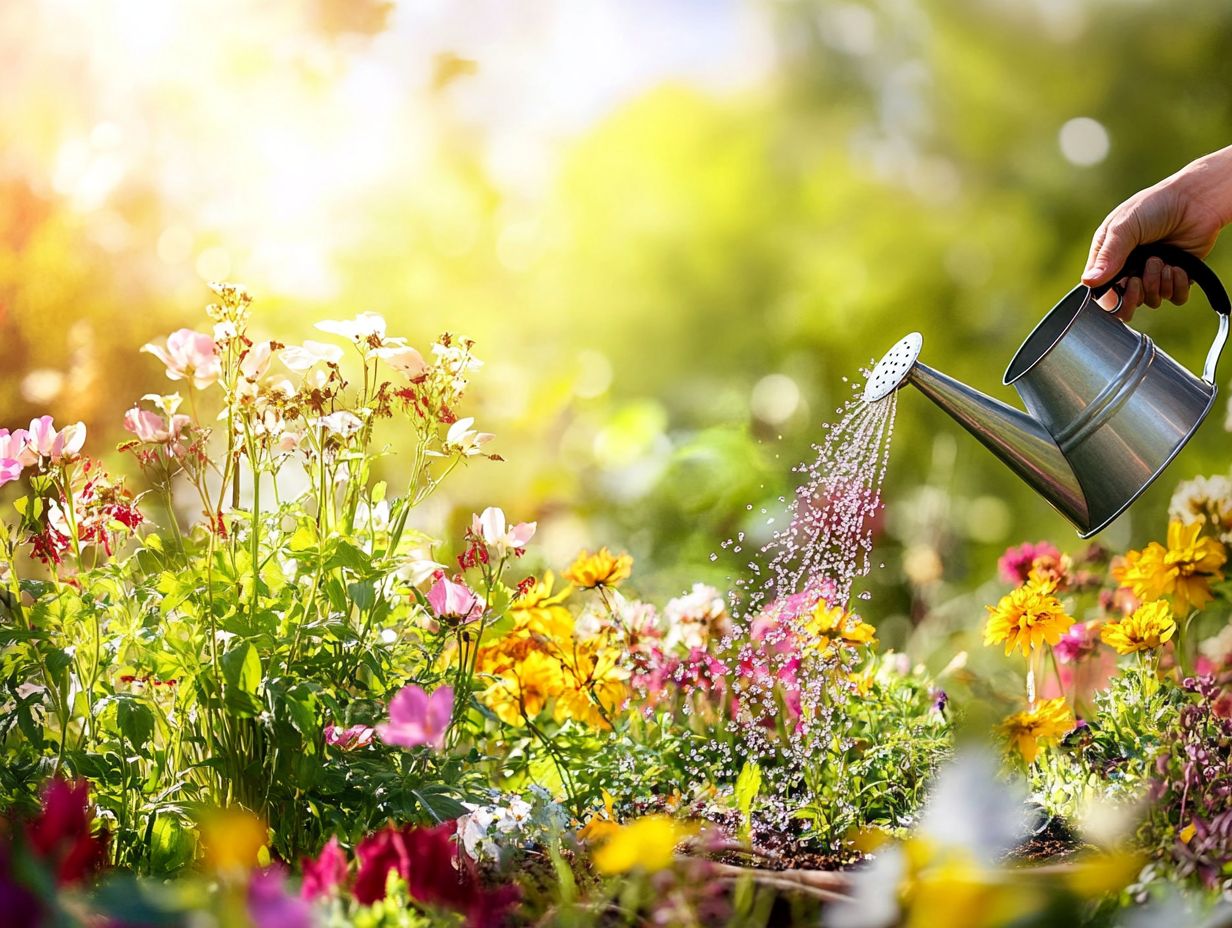
Cleaning your watering can is key to efficient watering and optimal plant health. Regular maintenance, like rinsing and cleaning, prevents residue buildup that can harm your plants.
A dirty watering can breeds germs and algae, hindering your plants’ growth. Start cleaning by emptying any remaining water, then give it a thorough rinse.
Next, fill it with warm water and vinegar. Let it sit for a few hours to dissolve stubborn deposits.
After that, use a soft brush to scrub the inside and remove any debris. Rinse the can several times to ensure all cleaning agents are gone. This process helps your plants thrive!
Techniques for Effective Watering
Mastering effective watering is essential for keeping your plants healthy. Whether you use basic tools or specialized equipment, knowing the right approach improves your plant care.
Proper Watering Techniques for Different Plants
Different plants require different watering techniques. Adjusting your watering methods can greatly enhance the health and beauty of your garden.
For delicate plants like orchids and ferns, mist them frequently. This technique avoids drowning their sensitive roots while providing vital moisture.
Larger plants like tomatoes and sunflowers benefit from deep watering. This allows moisture to reach deeper into the soil and encourages strong root systems.
Recognizing each plant’s needs like soil type and environmental conditions helps you create a flourishing garden full of vibrant blooms.
Timing and Frequency of Watering
Understanding when and how often to water is vital for healthy plant care. Well-timed watering promotes growth and enhances your garden’s appeal.
Watering in the early morning ensures moisture reaches the roots without excessive evaporation. In contrast, evening watering can lead to too much dampness, increasing the risk of fungal diseases.
Adjust your watering frequency based on plant type, weather, and soil quality. Regularly check your garden for signs of stress to fine-tune your watering schedule.
Troubleshooting Common Watering Issues
Identifying common watering issues is crucial for your plants’ health. Recognize problems like giving too much or too little water, or clogged spouts to refine your watering strategies.
Overwatering and Underwatering
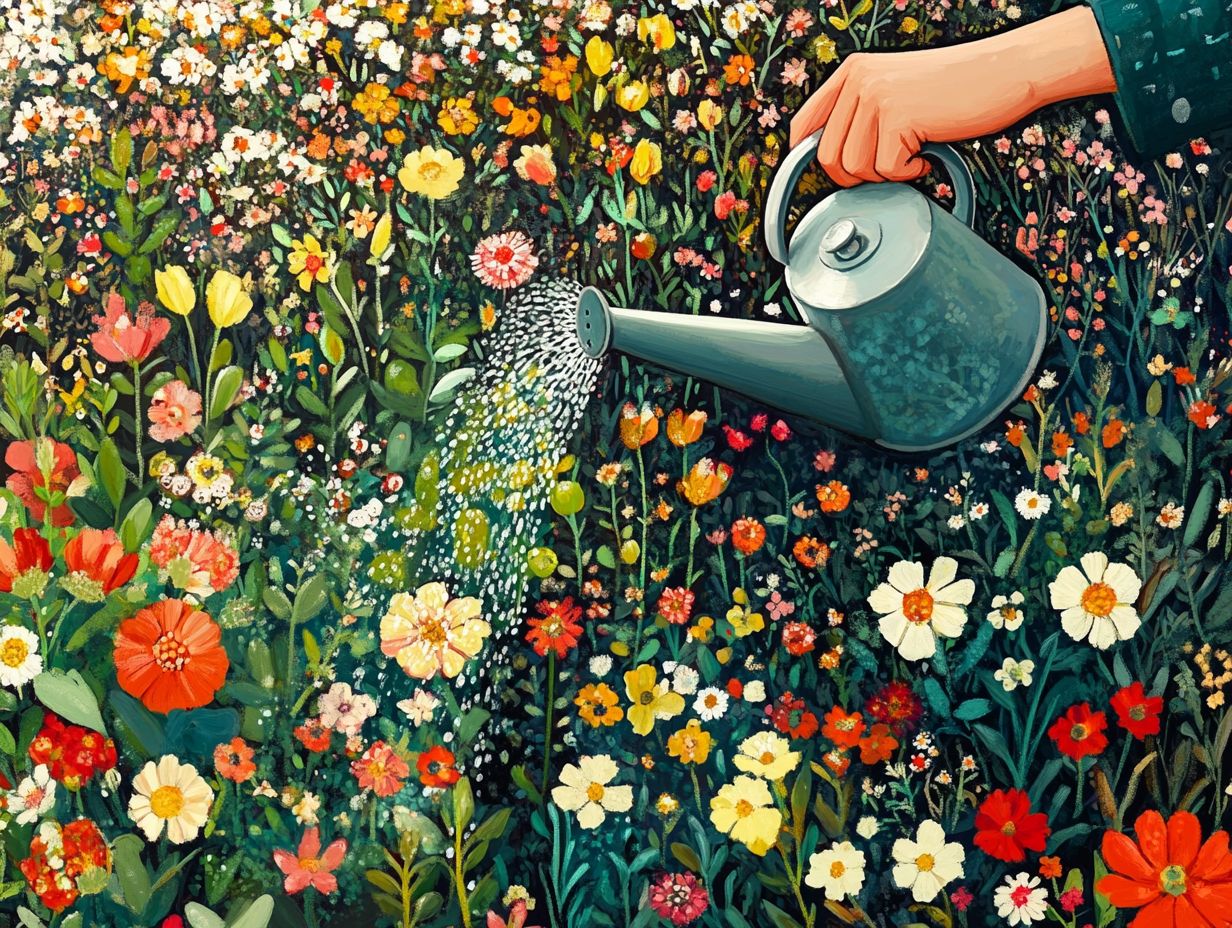
Overwatering and underwatering are two common traps that can derail your gardening efforts and negatively affect the health and growth of your plants. Understand the signs to improve your watering.
Overwatering usually shows symptoms like yellowing leaves, root rot, and mold. In contrast, underwatering often presents as crispy, browning foliage and stunted growth. When you spot these signs, check your watering routine and assess soil moisture levels.
To remedy overwatering, ensure proper drainage and let the soil dry between sessions. If you’re dealing with underwatering, increase your watering frequency and add mulch to help retain moisture, leading to flourishing plants.
Engaging with these practices enhances your garden and contributes to a vibrant ecosystem.
Dealing with Clogged Spouts
Clogged spouts can greatly affect your watering can’s effectiveness, disrupting your routine and impacting your plant care efforts. Regular checks prevent clogs, ensuring your watering can remains a key tool for gardening.
Inspect the spouts regularly for any debris or mineral buildup that could lead to blockages. Rinse the spout with warm soapy water after each use to loosen any leftover residue. For stubborn obstructions, a fine brush or a toothpick can work wonders.
If you encounter a clog, soak the spout in vinegar to dissolve mineral deposits and restore optimal flow. Incorporating these simple habits into your routine will keep your watering can efficient.
Tips for Maximizing Water Efficiency
Maximizing water efficiency in your gardening practices is essential for both environmental sustainability and the health of your plants. Implementing strategies to conserve water not only enhances your watering effectiveness but also simplifies your garden maintenance routine.
Conserving Water in Your Garden
Conserving water is crucial for embracing sustainable gardening practices and ensuring your plants’ vitality. Adopting effective watering techniques and utilizing sustainable materials can significantly minimize water waste.
Using mulch? It’s not just smart; it s essential! It helps retain soil moisture, reducing the need for frequent watering. Consider drip irrigation systems as well; they deliver water directly to the root zone, drastically cutting evaporation.
Choosing drought-resistant plants can change the game. These resilient species thrive on less water while enhancing your landscape’s beauty. Collecting rainwater in barrels for irrigation is another excellent strategy. It conserves resources and provides your garden with naturally soft water.
Integrating these eco-friendly practices will make your garden thrive!
Frequently Asked Questions
1) How do I choose the right watering can for my plants, including options like Haws watering can and Fiskars gardening tools?
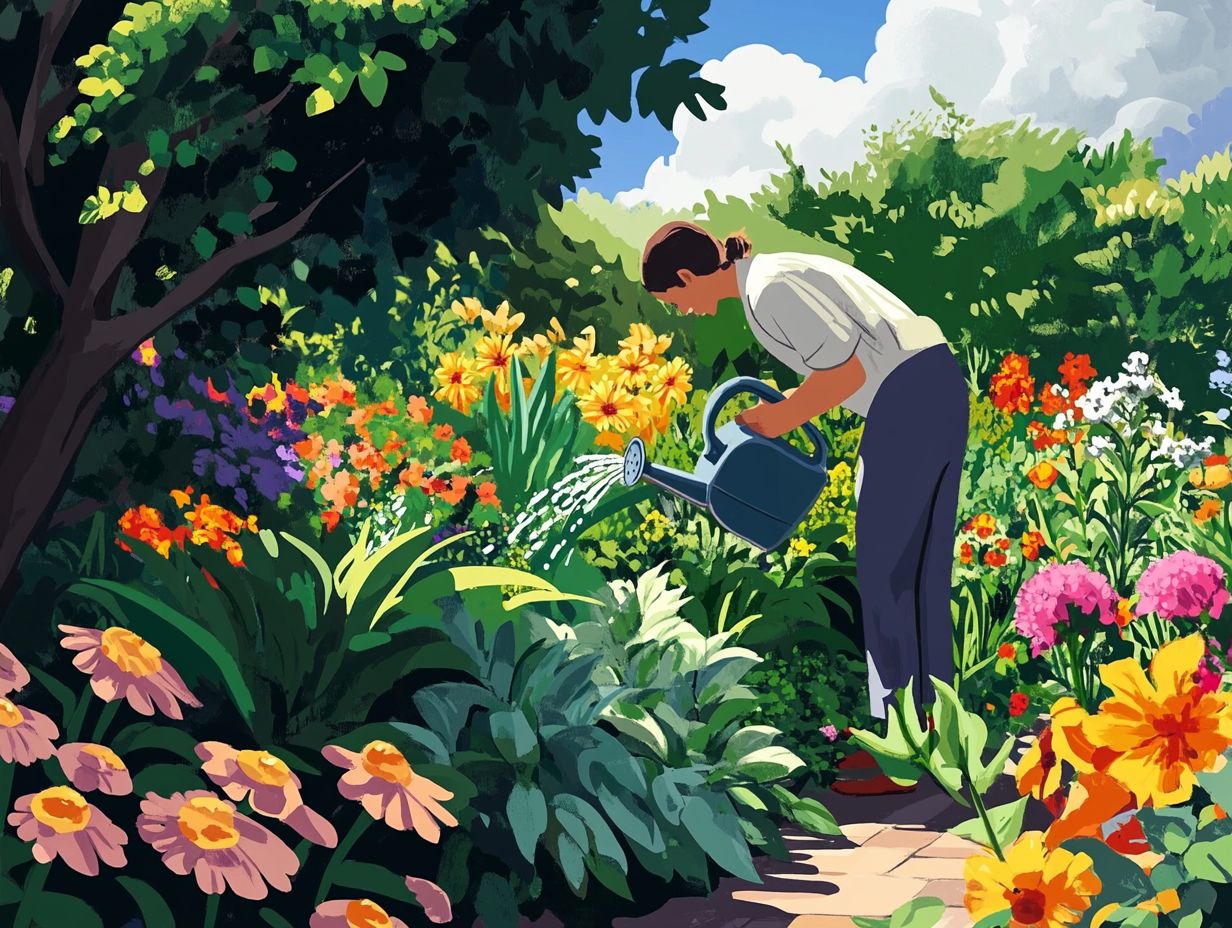
Choose a watering can with a long spout, a comfortable handle, and a suitable capacity. With the right watering can, you’ll make your plant care routine much easier!
2) How much water should I pour with each use of the watering can?
A good rule of thumb is to water until the soil is evenly moist but not soggy. Check how wet the soil is by sticking your finger about an inch into it.
3) What is the best way to hold a watering can?
Grip the handle with your dominant hand. Use your other hand to support the bottom for better control and to prevent spills.
4) How often should I water my plants with a watering can?
How often you water depends on your plants. Don t wait too long check the soil regularly to see if it s dry.
5) Can I use a watering can for all types of plants?
A watering can works great for many plants, but not all. Some delicate plants need a gentler method, like misting.
6) How do I clean and maintain my watering can for effective use?
Keep your watering can in good shape by rinsing it with warm water and mild soap regularly. After each use, empty any remaining water to prevent bacteria growth.
If you notice any leaks or cracks, repair or replace the can as needed.

